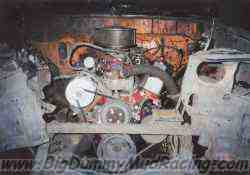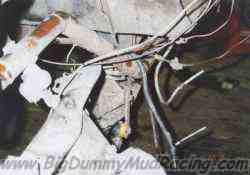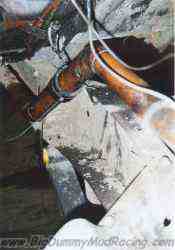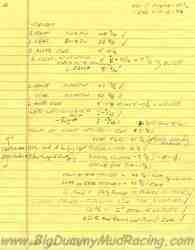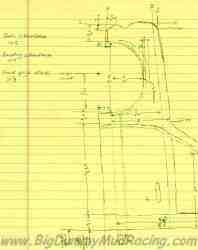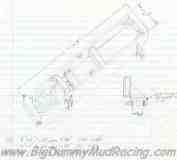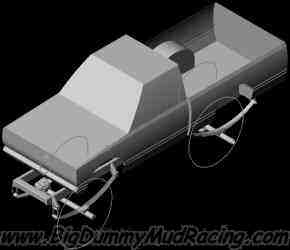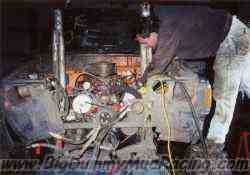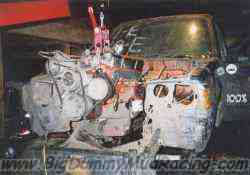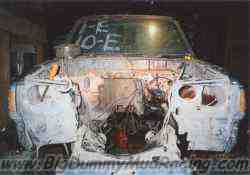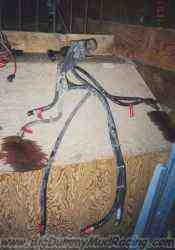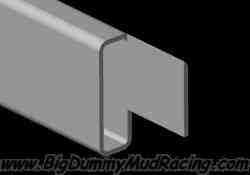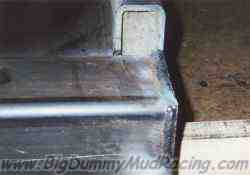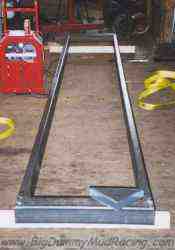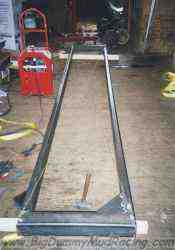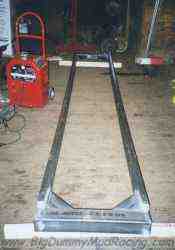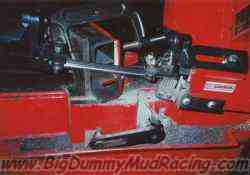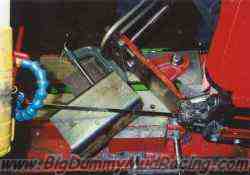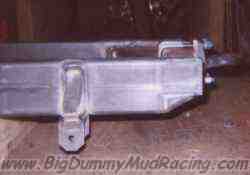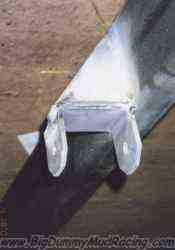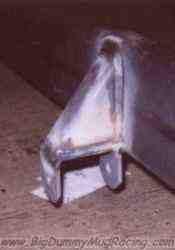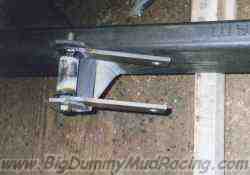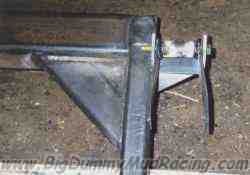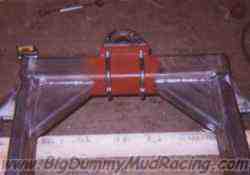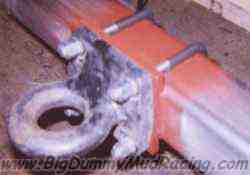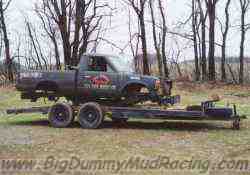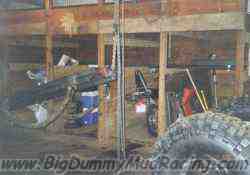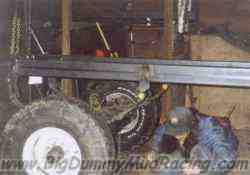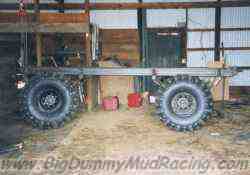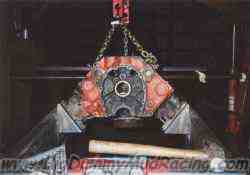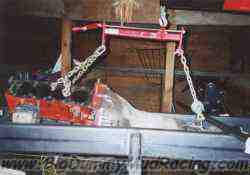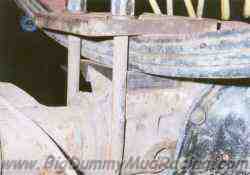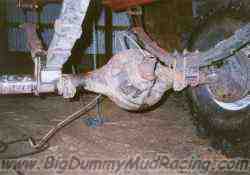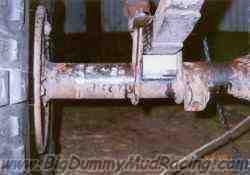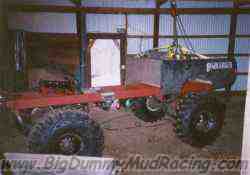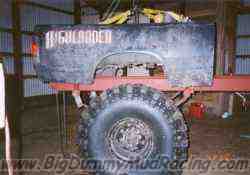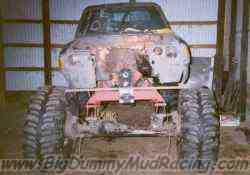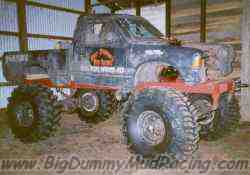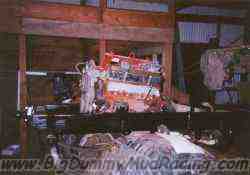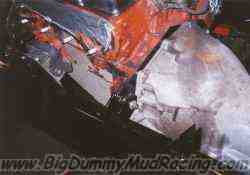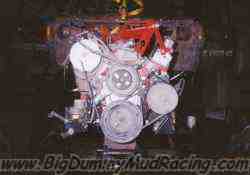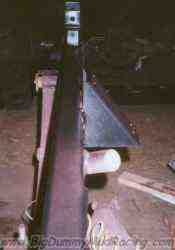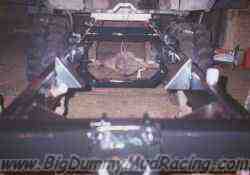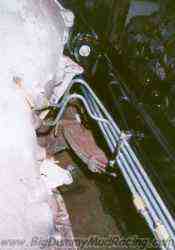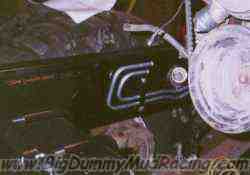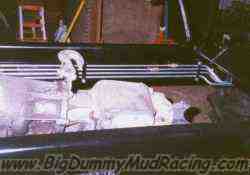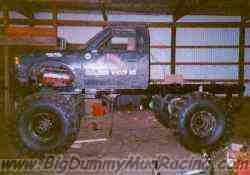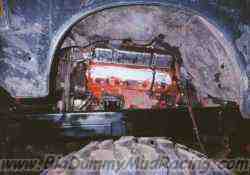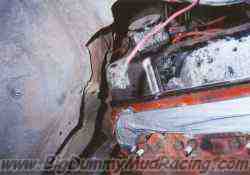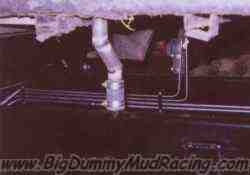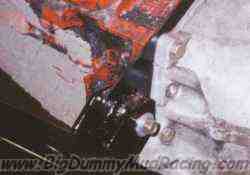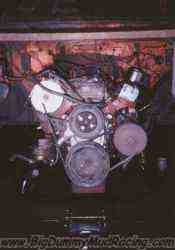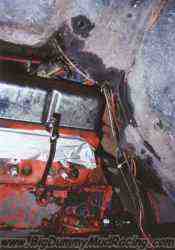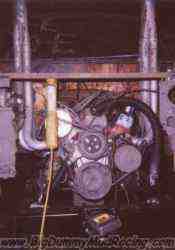|
If you have read through the history of Highlander, you now know that
we toasted the original 350 at the end of 1999, and for 2000 we built a
new small block - a 360 (350, .060 over) that should be capable of 475
HP and 450 ft-lb of torque. As we all know, as soon as you move up
another level in power, you find out all sorts of weak links, some of
which you may have fixed once or twice already. The weak link that
the new motor found was the frame.
Highlander was built on a stock Blazer frame, which had taken years
of abuse that it was never designed for, but the new motor was able to
propel the truck to new heights - literally - and the frame wound up on
the losing end of a 3' flight during the Memorial Weekend run of
2000.
We ran the truck for the rest of the weekend, but after the event, we
decided that the frame needed to be fixed before running it
anymore. At that point, with the new motor, tranny, rebuilt
transfer case, and everything else, it seemed just too risky.
The truck sat out the rest of 2000 as Jason and I sorted out it's
future. It had become obvious to both of us that things were just
getting too difficult to carry on running the truck together. In
the end, I bought out Jason's half of the truck. Before the frost
was out of the ground in the Spring of 2001, I started on a brand new
frame for Higlander.
|
